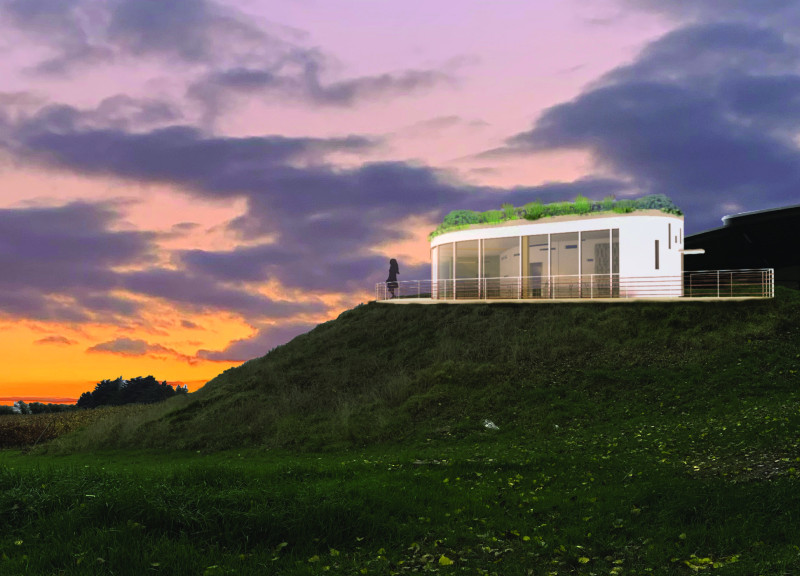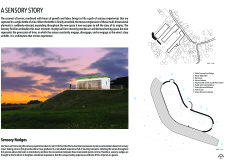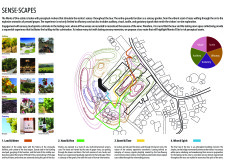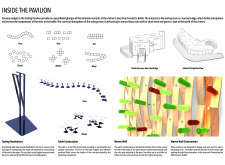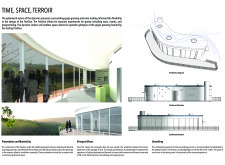5 key facts about this project
Delving into the Pavilion’s purpose, it functions as a tasting venue, culinary space, and educational interface for visitors. The design encourages exploration and interaction with the landscape, making the act of wine tasting a narrative experience rather than a simple consumption event.
The Pavilion’s layout promotes flexibility, allowing for both individual and group experiences in tasting areas. Unique features include operable elements such as roof openings and adaptable walls that facilitate seasonal adjustments. This adaptability ensures that the space remains functional throughout the year, responding to the varying activities of the vineyard.
Organic forms characterize the design, allowing for a seamless flow between indoor and outdoor environments. The incorporation of sky domes maximizes natural light, creating a warm atmosphere that mimics the feeling of being among the vines. Open terraces provide panoramic views of the vineyard, establishing a direct connection between the Pavilion and its agricultural context.
A key distinguishing element is the woven bottle wall, constructed from reclaimed barrel staves. This installation serves both artistic and functional purposes, expressing sustainability through materials while offering an engaging display for wine. Additionally, the Pavilion's auditory and olfactory elements enhance the sensory experience, making use of soundscapes and aromatic plants to elevate the tasting journey.
Exploring the architectural plans and sections of the Sensory Pavilion reveals further design strategies and spatial dynamics integral to the project. The balance of structure and environment demonstrates an innovative approach to wine tourism, ensuring that visitors engage fully with both the product and its origin.
For a comprehensive understanding of the design and architectural ideas behind the Sensory Pavilion, readers are encouraged to review detailed architectural plans, sections, and designs, which provide insights into the technical aspects and unique features of the project.


